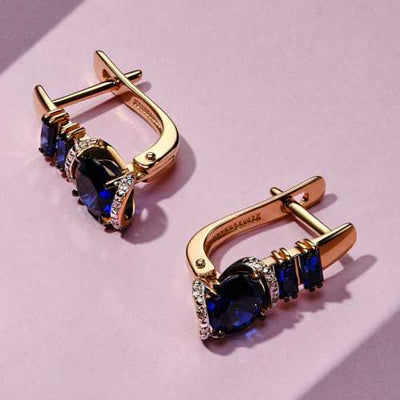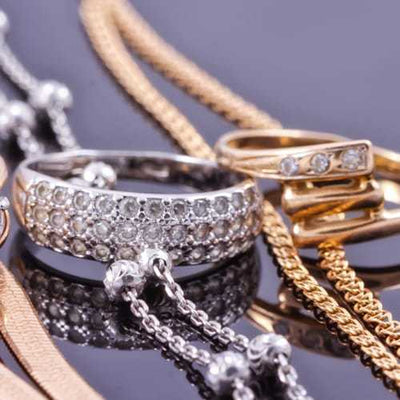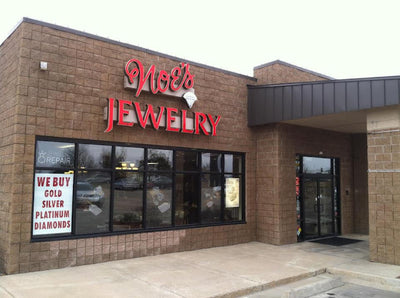Pearls are known for their beauty, but not many people know much about these delicate gems. Pearls were first discovered more than 4,000 years ago. Known for being the June birthstone, pearls are also often associated with both purity and marriage. At Noe’s Jewelry, we know that pearls are timeless gems that are appropriate for nearly any occasion.
What Is a Pearl?
Pearls are calcium carbonate formations created when a microscopic irritant causes a mollusk to coat the irritant with nacre. Due to the way they are formed, pearls are the only gems that are found in living creatures. Natural pearls are incredibly rare. Most of what can be found on the market are cultured pearls.Types of Pearls
The two main types of pearls are natural and cultured. Natural pearls are found in the bodies of certain mollusks. Cultured pearls are made by deliberately inserting a bead or piece of tissue into a mature mollusk to be formed into a pearl. Pearls can be formed by both freshwater and saltwater mollusks.
Natural pearls are created without any human intervention. These pearls are very rare.
Pearls can be further divided into more specific types:
- Akoya pearls: These small, cultured Japanese pearls are either off-white or clear white. Akoya pearls are formed by saltwater mollusks.
- South sea pearls: South sea pearls hail from Indonesia, Australia, and the Philippines. They tend to be the largest type of pearl, and they come in a variety of colors ranging from white to golden to soft pink. These pearls come from the pinctada maxima oyster and start out as part of the thick “mother of pearl” layer in giant shells. The Masami Pearl Company developed a special technique for harvesting these pearls by removing the layer of mother of pearl, cubing the pearl layer, and rounding the cubes into the signature pearl shape. The rounded pearls are then polished. South sea pearls are saltwater pearls.
- Tahitian pearls: These pearls are unique due to their wide range of colors. They also tend to be darker than other types of pearls. You can find Tahitian pearls that are blue, purple, grey, and even black. These pearls are created by the pinctada margaritifera cumingi oyster. Tahitian pearls are another type of saltwater pearl, but they are found in more locations than just Tahiti.
- Mabe pearls: Mabe pearls grow in the shells of mollusks. Due to this, they are flat. Like their round counterparts, Mabe pearls are used in all kinds of jewelry.
- Baroque pearls: Baroque pearls are unique in their shape and size. Unlike round pearls, baroque pearls are irregular and may all look different even on the same piece of jewelry. Any irregularly shaped pearl is considered baroque.
Where Are Pearls Found?
 Pearls can be found in a variety of different types of mollusks in both freshwater and saltwater environments. Saltwater pearls tend to be more valuable than freshwater pearls. This is because they take longer to cultivate. While freshwater mollusks can produce up to 30 pearls at a time, saltwater mollusks can only create one pearl at a time.
Pearls can be found in a variety of different types of mollusks in both freshwater and saltwater environments. Saltwater pearls tend to be more valuable than freshwater pearls. This is because they take longer to cultivate. While freshwater mollusks can produce up to 30 pearls at a time, saltwater mollusks can only create one pearl at a time.
Freshwater pearls are found in mollusks living in rivers, lakes, and ponds. Most freshwater pearls come from China. Generally, freshwater pearls are white, but they can also be pink and other pastels. Round, oval, and teardrop-shaped freshwater pearls are common. While freshwater pearls have nice luster, saltwater pearls tend to be shinier due to a thicker nacre.
Quality Factors for Pearls
While diamonds use the 4 C’s to determine value, a pearl’s value is determined based on seven different factors.Luster
Luster refers to the reflectiveness of the surface of a pearl. Pearls with a high luster, or shine, are more valuable. High luster will show bright, sharp reflections. Dull or soft lusters show fuzzy, diffused reflections. Pearls with dull lusters have very weak reflections.
- Excellent: Reflections are sharp and bright
- Very Good: Reflections are bright and near sharp
- Good: Reflections are bright but not sharp; they might be slightly hazy around the edges
- Fair: Reflections are blurry and weak
- Poor: Reflections are diffused and dim
Surface Quality
Any blemishes on the surface of the pearl will impact the value. The clearer the pearl is, the more it is worth. There are four different quality gradings for pearls:
- Grade A: Pearls that are entirely smooth. A- pearls have only one or two tiny ripples or indentations. These imperfections will cover less than 10 percent of the surface. A drill hole can usually hide these imperfections.
- Grade B: Pearls that are lightly blemished. These pearls have minor imperfections that cover less than a third of the pearl’s surface.
- Grade C: Pearls that are moderately blemished. They have light imperfections that cover less than two-thirds of the pearl’s surface.
- Grade D: Pearls that are heavily blemished. These pearls can have light imperfections covering more than two-thirds of the pearl’s surfaces and no deep imperfections. D pearls may also have deep imperfections over half of the pearl’s surface.
Shape
Spherical pearls tend to be the most valued. However, there are other shapes of pearls. Symmetrical teardrop-shaped pearls also have value. Symmetry is often more valuable. Baroque pearls are increasing in popularity, and some people actively seek these irregularly shaped pearls.Size
Pearls can come in a wide array of sizes. Depending on the mollusk the pearl is obtained from, cultured pearls tend to be between 2mm to 16mm in diameter. Like most gems, the larger the pearl, the more valuable.
Pearls can be measured in millimeters, grains, or mommes. A jewelers’ grain equals 0.25 carats. Mommes are used to size quantities of pearls; one momme equals 75 jewelers’ grains or 18.75 carats.
Round and off-round pearls have their measurements taken by their shortest diameter. Pearls that are other shapes are measured along the longest and second-longest dimensions.
Color
White pearls are the most popular, but there are a variety of color options for natural pearls. Both body color and overtone are considered when grading a pearl’s coloration.Nacre Thickness
Nacre thickness is a measure of durability for pearls. Additionally, nacre thickness is related to the orient and luster of the gem. Good, commercial-grade pearls have a nacre thickness of 0.25 to 0.35 mm. Gem grade pearls have a nacre thickness between 0.35 to 0.5 mm.Matching
For strands and pieces that contain multiple pearls, how well the pearls match is considered before determining value.Types of Pearl Strands
 Different lengths of pearl strands have different names. Here is a quick breakdown on the names of pearl strands:
Different lengths of pearl strands have different names. Here is a quick breakdown on the names of pearl strands:
- Collar: A collar fits against the throat.
- Choker: A choker fits at the base of the neck.
- Princess: A princess length necklace reaches around the collarbone.
- Matinee: A matinee length strand of pearls is between 20 and 24 inches.
- Opera: An opera-length strand is between 30 and 36 inches long.
- Rope: A rope length strand of pearls must be longer than 36 inches.
Caring for Pearls
Pearls have unique needs. Proper maintenance will ensure that your pearls last a long time. To keep your pearls beautiful, follow these three tips:
- Avoid sweat and water: Pearls might form in the water, but that doesn’t mean that they aren’t damaged by sweat and water. The topcoat placed on pearls to maintain their color and shine can wear off when exposed to water.
- Avoid scratching: Scratching will devalue precious gems. To avoid scratching your pearls, put them back in the box they came from or in a soft, padded area dedicated to just the pearls.
- Avoid chemicals: Chemicals are harmful to most precious gems. Be sure you don’t clean your pearls with chemicals and avoid wearing your pearls when you are going to be working with harsh chemicals. To safely clean your pearls, wipe them with a damp cloth or bring them into a professional jewelry cleaner.
If you live in the Kansas City area, visit Noe’s Jewelry for a wide variety of pearl and other gemstone jewelry. Our selection offers a variety of color, shape, and setting options. Our jewelers would love to help you find that perfect pearl piece today. Give us a call at 816-322-7227.
Check out the other gems in our Gemstone Series Guides:





